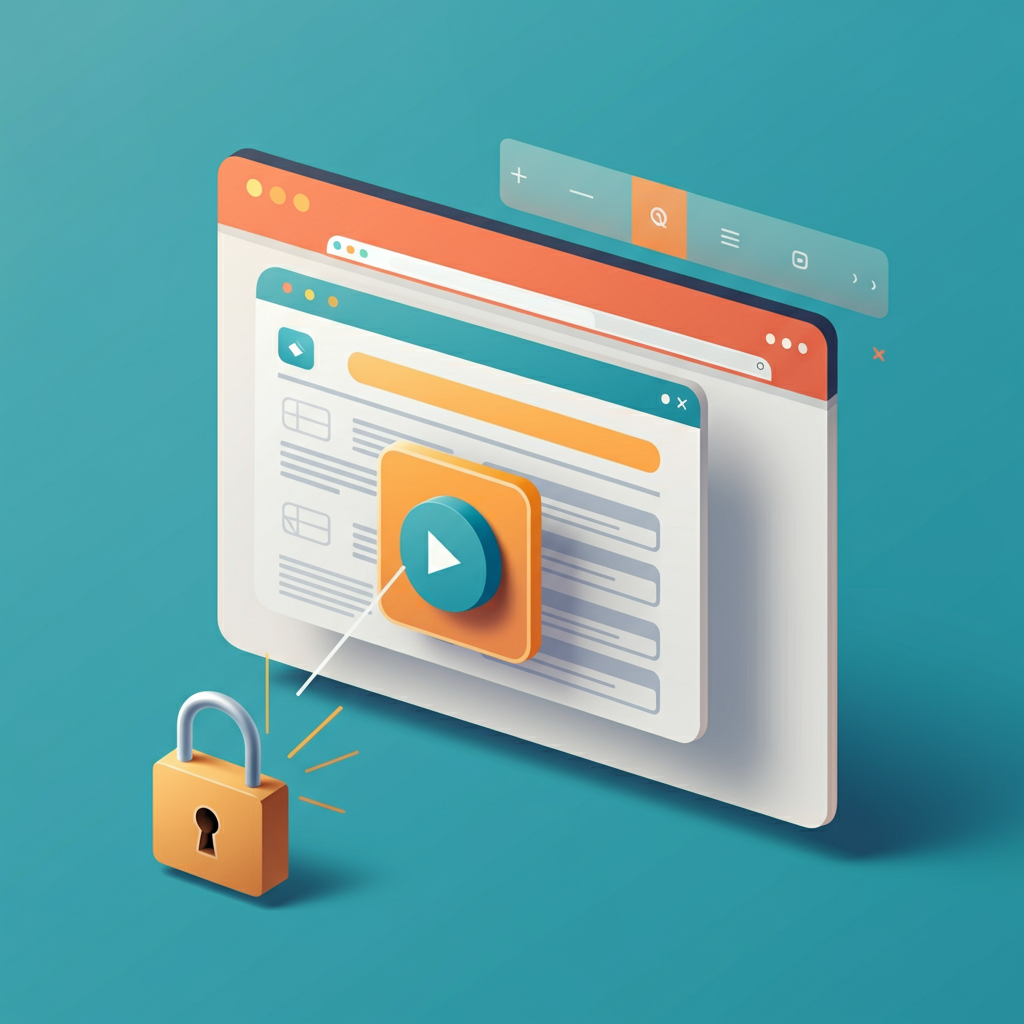Whether you're at school, work, or traveling, encountering blocked websites can be frustrating. Sometimes, important resources, entertainment platforms, or even your favorite social media sites become inaccessible due to restrictions.
The good news? There are simple, effective ways to get around these hurdles safely and responsibly.

This guide will show you how to unblock websites across different devices while covering the tools and methods that work best and staying mindful of the legal and ethical implications.
Why Are Websites Blocked?
Before jumping into solutions, it helps to understand why websites are blocked in the first place. Knowing the reasons allows you to choose the right unblocking method confidently.
1. School and Workplace Restrictions
Schools and workplaces block websites to limit distractions and ensure productivity. Streaming platforms, gaming sites, and social media such as YouTube and Instagram are common restrictions.
Additionally, schools block harmful or inappropriate content to comply with laws like the Children’s Internet Protection Act (CIPA).
2. Geo-Restrictions
Some content is only available in certain regions due to licensing agreements. For example, a Netflix series available in Europe might be blocked in the United States.
3. Government Censorship
Governments in countries like China and Iran block sites due to political motives or to restrict the flow of information. Popular platforms like Facebook, Twitter, and WhatsApp are all off-limits in these regions.
4. Bandwith Management
Institutions often block high-bandwidth services like streaming and downloading platforms to prevent network slowdowns.
Understanding these restrictions ensures that you choose acceptable and safe ways to unblock sites for personal or professional use.
Effective Methods to Unblock Websites

1. Use a VPN (Virtual Private Network)
A VPN is the most secure and reliable way to unblock websites. It encrypts your internet connection and routes it through a server in a different location, masking your IP address. Popular VPN services include NordVPN, ExpressVPN, and Surfshark.
Steps to Unblock Websites with a VPN:
-
Choose a reliable VPN service. Popular options include NordVPN, ExpressVPN, and Avast SecureLine VPN.
-
Download and install the VPN app on your device.
-
Log in and connect to a server located where the content is accessible.
-
Navigate back to the blocked site – it should now load without issues.
Pro tip: Some workplaces and governments block VPN applications. If that’s the case, continue reading for alternatives.
2. Use a Proxy Server
Proxy servers act as intermediaries between your device and the website you're trying to access. They replace your IP address with their own, allowing you to bypass restrictions. You can try free options like HideMyAss Proxy or premium services like Whoer.net.
Simple Steps to Use a Proxy Server:
-
Visit a proxy website like Hide.me or Proxify.
-
Enter the URL of the blocked site.
-
Select other settings (like location) and bypass restrictions.
Keep in mind that proxies are often slower than VPNs and lack encryption, limiting their overall security.
3. Access via Google Cache
Google saves cached versions of many web pages to improve loading speeds. You can use this functionality to view blocked content.
Steps to Access Google Cache:
-
Search the blocked site in Google.
-
Click the down arrow next to the site URL in the results.
-
Select Cached from the dropdown menu to surf the saved version.
Note: This method won’t work for dynamic or interactive website elements.
4. Use URL Shorteners
Sometimes, blocks are applied to specific URLs. Using a tool like Bitly or TinyURL to shorten the link can help bypass simple filters.
Steps to Shorten a URL:
● Copy the URL of the blocked site.
● Paste it into a URL shortener tool such as Bitly or TinyURL.
● Access the site using the new shortened link.
5. Try the Tor Browser
The Tor browser uses a network of servers to anonymize your browsing and bypass even sophisticated firewalls. It’s often used in countries with heavy censorship.
Steps to Use Tor:
● Download and install the Tor Browser.
● Launch the application and connect to the Tor network.
● Enter the URL of the blocked site.
Caution: Tor may slow browsing speed due to its numerous layers of encryption, but it provides exceptional anonymity.
6. Install Browser Extensions
Certain browser extensions, like Hola or ZenMate, can help you access blocked sites easily. These are user-friendly and integrate seamlessly into web browsers like Chrome or Firefox.
How to Install an Unblocking Extension in Chrome:
● Open the Chrome Web Store.
● Search for proxy or VPN-related extensions.
● Install a trusted tool, activate it, and try accessing the blocked site.
7. Accessing via IP Address
Instead of entering the website’s URL, you can try accessing it via its IP address.
How to Find a Website’s IP:
1. Open Command Prompt or Terminal.
2. Type ping website-url.com (replace with the actual URL).
3. Copy the IP address and paste it into your browser.
This method is useful for bypassing restrictions that block domain names but not IP addresses.
Device-Specific Solutions

PC and Mac
● Use VPN apps like NordVPN or customise DNS settings as outlined above.
● Install browser extensions that enable proxy access (e.g., Hola or Browsec).
Android
● Download VPN apps from the Google Play Store.
● Use browser-based proxies if installing software isn’t an option.
iOS
● Access VPN services via apps like Surfshark or TunnelBear from the Apple App Store.
● Modify DNS settings through your Wi-Fi settings for quick access.
School Chromebooks
Chromebooks issued by schools typically have restricted admin privileges, preventing software installations. Use these lightweight techniques instead:
● Access sites through public proxies.
● Use the Google Cache workaround.
● Try URL shorteners for simpler blocks.
Work Computers
Work policies often prohibit installing VPNs like OpenVPN. Proxies or Chrome VPN extensions provide great workarounds. However, avoid accessing personal content if workplace monitoring measures are in place.
Legal and Ethical Considerations
Unblocking websites isn’t always risk-free.
● Follow Laws: Using VPNs in countries like China or North Korea could carry legal consequences. Always check the local regulations before bypassing restrictions.
● Respect Policies: Schools and workplaces restrict websites for productivity and security purposes. Violating these rules can lead to suspension or termination of employment.
● Avoid Malicious Tools: Be cautious of free, unreliable proxies or extensions containing malware. Choose a well-reviewed and verified tool.
Use Cases
● At School or Work: Access valuable research materials or neutral sites that are blocked for non-educational reasons. Proxies or extensions usually work well here.
● Travelling Abroad: VPNs allow you to access home-grown streaming platforms or business tools blocked internationally.
● Under Censorship: Use tools like Tor to bypass restrictions in countries with government-imposed content blocks.
Tool Comparison
| Feature |
VPN |
Proxy Server |
Tor Browser |
| Speed |
Fast (paid options) |
Moderate |
Slow |
| Encryption |
Yes |
Rarely |
Yes |
| Anonymity |
Moderate |
Low |
High |
| Ease of Use |
Easy |
Easy |
Advanced |
| Cost |
Paid options exist |
Often free |
Free |
VPNs often provide the best combination of speed, security, and versatility.
Frequently Asked Questions (FAQs)
Q1. Can I unblock sites without a VPN?
Yes! A proxy server, Google Cache, URL shorteners, or browser extensions can work well for basic restrictions. For stricter censorship, a VPN becomes necessary.
Q2. Are VPNs illegal?
VPNs are legal in most countries, but their usage in authoritarian regions or for bypassing restrictions (like copyrighted streaming licenses) may lead to violations.
Q3. How do I access blocked sites on Chrome?
Install a browser extension like Freegate Proxy or use a public proxy site to reroute your browsing via Chrome.
Q4. Which method should I use if I don’t have admin privileges?
If you can’t install a VPN, try using web proxies, URL shorteners, or Google Cache.
Q5. Is it safe to use free VPNs or proxies?
Free tools often have limited security features and slower connections. Opt for trusted free services or stick to premium options for maximum protection.
Final Thoughts
Unblocking websites opens doors to valuable information and services while addressing unfair restrictions. From using a VPN to proxy servers, there are tailored solutions for every device and scenario.
However, always stay mindful of legal boundaries and institutional policies to avoid unwanted consequences.
By following this guide, you'll be equipped to surf freely and securely whenever you face restrictions.
Service or Contact with New Web Order
If you're looking for a reliable and professional service to help you navigate website restrictions or need assistance with unblocking sites, New Web Order is here to help.
We offer tailored solutions for individuals, schools, and workplaces to ensure seamless and secure access to the web. Whether you need guidance on VPNs, proxies, or other tools, our team is ready to assist.
Contact Us Today:
Email: contact@newweborder.co
Phone: +44 7360856434
Let us help you unlock the full potential of the internet while staying safe and compliant.


